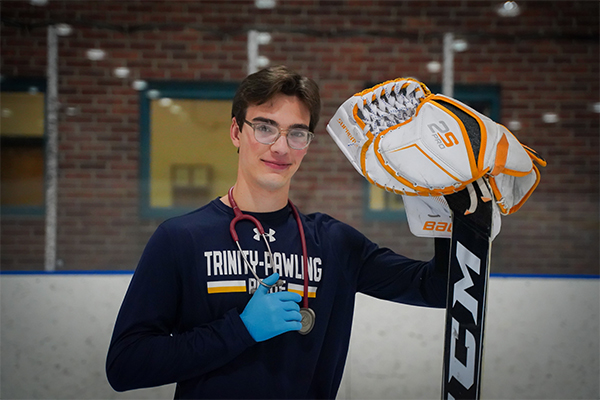
This past summer I trained and was certified as an Emergency Medical Technician (EMT) in the state of New York. This endeavor was sparked by a ground-breaking epiphany that, for me, hockey is not likely to be a very sustainable, practical, or profitable career path. (Thanks Coach Miro for the life advice, and Coach Ferraris for calling my attention to the fact that I am not 6’5”.)
While thinking about other potential career options that involved strenuous physical exertion while wearing heavy equipment in extreme temperature conditions, I considered firefighting. In the process of investigating careers with the FDNY, I stumbled upon information about becoming an EMT. This intrigued me because I have always been interested in health and medicine, and becoming an EMT seemed to provide a good first step to many related careers.
I gained much respect for these emergency personnel after breaking my arm rock climbing, and later, when one of my teammates broke his femur on the ice — and another his neck. Hockey is a risky sport you see, but since the age of four goaltending had been my life. I loved making big saves in clutch moments and getting to be the hero! Hockey gave me a sense of purpose and pride. Becoming an EMT provides an avenue for pursuing those same feelings — I would save lives instead of pucks.
The course I took this summer included 49 other students, almost all of whom were in or already out of college. There was one main lecturer and approximately 16 other instructors who demonstrated techniques and assisted with the practical exercises.
I received my equipment, which included a stethoscope, sphygmomanometer, blood pressure cuff, and a pocket facemask. I learned how to administer CPR using the facemask, which features a one-way valve to prevent the influx of a patient’s bodily fluids.
I learned the difference between punctures and impalements. In puncture wounds, the foreign object, which has made a hole has since left the patient. With impalements, the foreign object resides inside the patient. If you are stabbed, this is a puncture. If you are in a hurricane, and a flying piece of rebar enters your eye — this is an impalement. With such an injury, I learned that it is important to immobilize the object. For instance, one would use a paper cup with a rebar size hole poked in the bottom, which is then taped to the patient’s head. It is also important, I learned, to cover the uninjured eye because eyes move in tandem and could cause further damage.
Another course requirement was working a 12-hour shift on an ambulance. We responded to 10 calls, one of which was a man who had shattered his patella falling off a ladder while trying to change a light bulb, and another was a 57-year-old woman suffering vicious and life-threatening gastrointestinal hemorrhaging. I learned the procedure for cleaning and disinfecting an ambulance and yourself, which we practiced after every patient.
At the end of the course, to receive my state certification, I had to pass both a state written and practical skills exam. (My arm splinting was exemplary!) To retain my certification, I must attend a refresher class and pass those same exams every three years.
There is the option of taking two years of additional schooling at a technical school to become a paramedic, but right now I am focused on going to a four-year college where I can pursue scientific and biological research opportunities, as well as the arts. I may work as an EMT while in college.
I think that the skills I learned over the course of this past summer are vastly important. Truthfully, I am surprised that basic first aid and life support (CPR) are not a more integrated part of our educational system. You never know when you may need to save a life.
by Linus Wramage ’20
Photo by Andrew Zhang ’20
